
What is this life if, full of care,
We have no time to stand and stare.
No time to stand beneath the boughs
And stare as long as sheep or cows.
No time to see, when woods we pass,
Where squirrels hide their nuts in grass.
Taken from Leisure by William Henry Davies
The sun is beating down as the soles of my boots crunch on the parched grass, slowly losing its colour as the weeks pass without rain. I stop; the only sounds are the clicking chirp of the swallows darting in and out of the stables and the call of a buzzard wheeling on the thermals above. The silence is noticeable as if somehow the humming of traffic and planes have become the normal white noise of the world. I breathe in the quiet and stare out over the valley, the distant pristine golf course lies empty, no whirring of the tractor’s constant cutting of the greens. The ant like lines of cars hurrying on the road below have also disappeared. Despite the chaos in the world around, a new serenity has descended. My first day back working after a two week downing of tools at the start of the lockdown and I am afraid of breaking this delicate quiet.
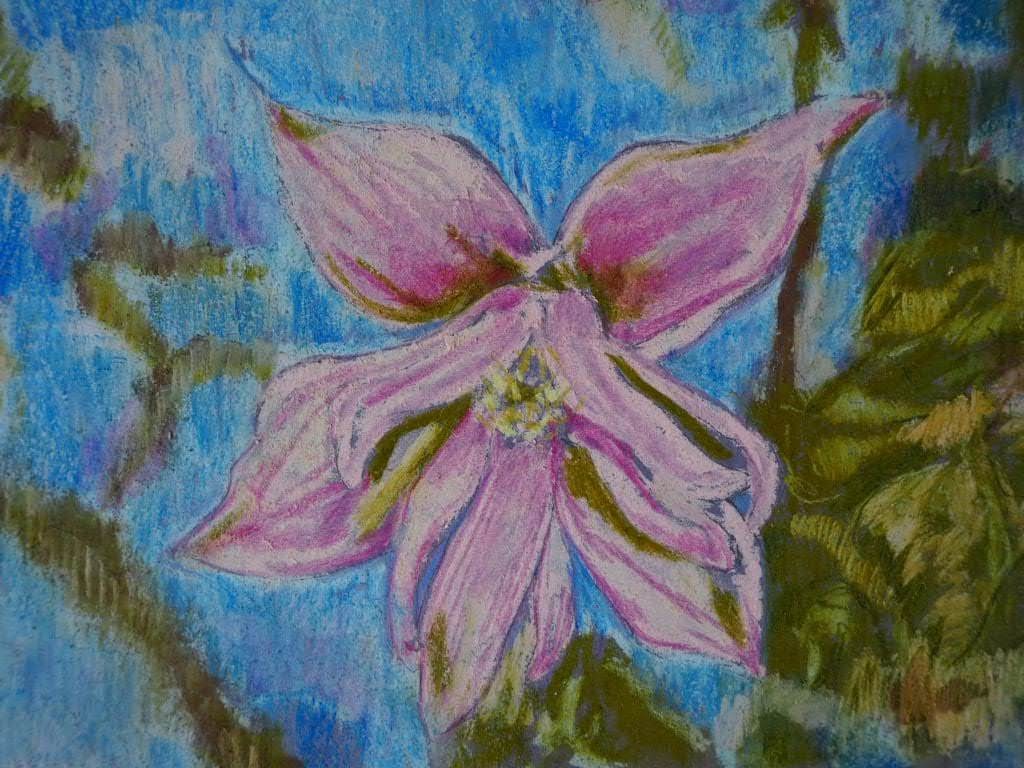
While the world has been in the grip of a virus pandemic, bringing our fast paced lives to a juddering halt, nature as it always does, has carried on regardless. In fact, as human intervention has been reduced the natural world has flourished. Bird song has travelled further without the drone of traffic, air pollution has reduced and rivers have cleared . The lack of council mowing has seen verges full of bluebells, Lady’s smock (Cardemine Pratensis), Ox eye daisies and many other wild flowers, appearing as if by magic from the once shorn monotonous grass. Even more amazing is that people are now taking notice. Recently one of these roadside wild flower meadows was cut down in its prime leading to complaints from local residents.
Areas that were once only viewed from the car window on a bleary eyed commute, are now being walked daily and studied closely as people take to their permitted exercise. So far, in this short space of the lockdown, people are beginning to connect with the natural world around them discovering the escape and comfort it can provide
The lockdown has also caused many to appreciate the confines of their house and garden, the fences and hedges becoming the barriers to the danger outside. Gardens over the last couple of months, have for many, returned to being the refuge from a world in chaos.
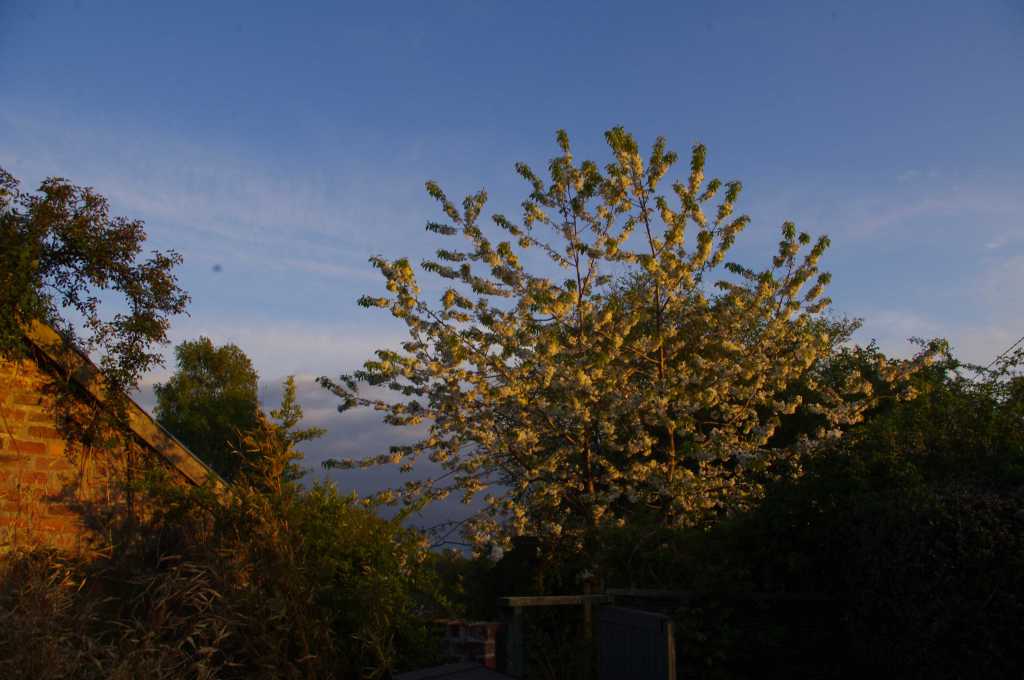
A new found connection with the gardens and the natural world has also been sparked by an unprecedented period of hot weather. The cherries that are normally battered by winds were allowed to bloom unfettered. While people have enjoyed the unseasonably warm and dry days the plants are beginning to suffer. Lawns are brown and crisp under foot, the clay soil like dust on the surface and solid lumps underneath. Weeding in this impenetrable soil is almost impossible. The water stress has shown itself in the orchard with the proliferation of powdery mildew affecting the new shoots. This appears as a white powder on the leaves which look shrivelled and curled. Normally on smaller trees these could be easily plucked off but there is just too much to even begin.
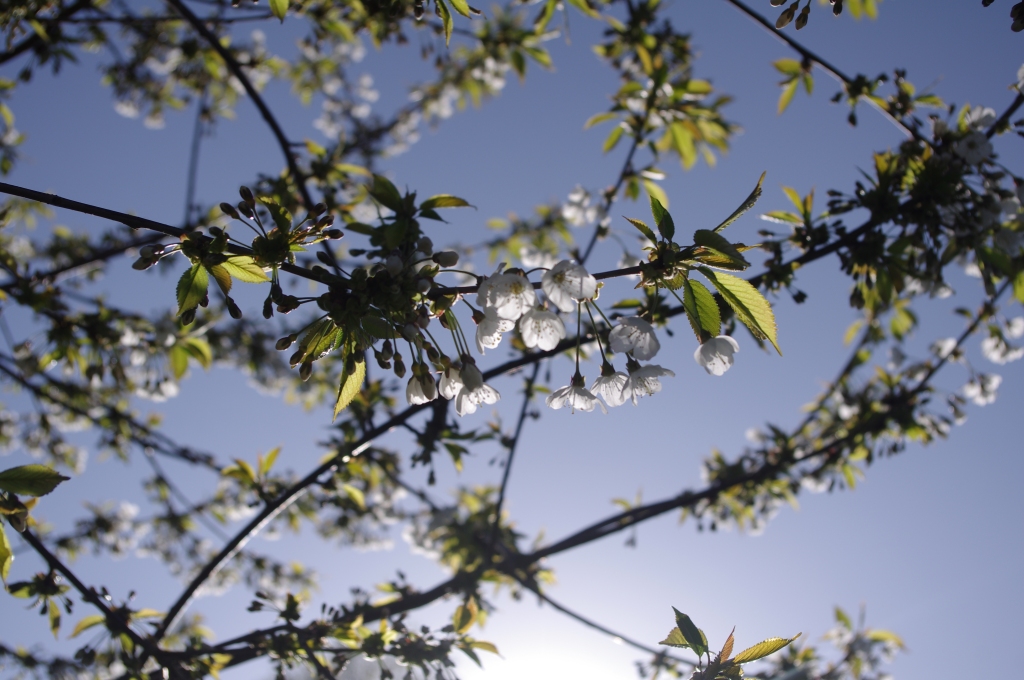
As the news of lockdown broke, I took two weeks off to consider if I could continue gardening. During these weeks of uncertainty, the certainty that nature would continue provided me with much needed solace. The world may have stopped, at least for a moment, but the apple blossom was abundant promising a good crop for the year ahead.
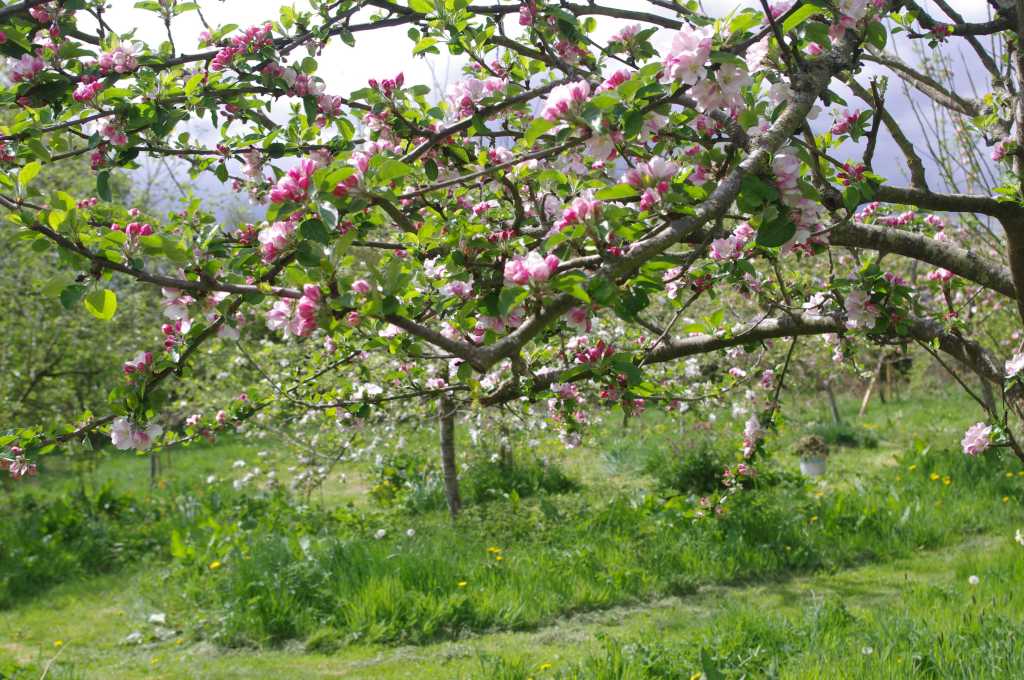
Gardeners often think to the future, planting, feeding or pruning for the following year, but I often find a great connection with past. There is something strangely comforting knowing that people have worked the same patch of land for generations, as i have said before we are merely guardians of our own time. Here at home in the cottage garden, evidence of past workers often surfaces in the form of pieces of clay smoking pipes, perhaps discarded while taking a break from digging over the kitchen garden. It can be pretty much guaranteed that if you dig a hole anywhere in this garden a piece of pottery will surface, many from the 19th century but possibly even 18th century.

These pieces are quite likely Buckleyware from the famous local clay fields and potteries of Buckley. The distinctive cream over brown swirls in the photos are very similar to the photo from this collection https://www.peoplescollection.wales/items/7997. They were uncovered as I dug a hole near the wildlife pond for some newly purchased Iris Ensata, planted in memory of long time customer and friend. I am not sure how the pottery has ended up scattered deep under the meadow, perhaps a rubbish pit, once in the corner of the field, was ploughed into the earth. Each breaking of the soil is a treasure hunt, another shard to add to the growing collection of misfit pieces.
As spring has turned from summer the plant highlights have been numerous.
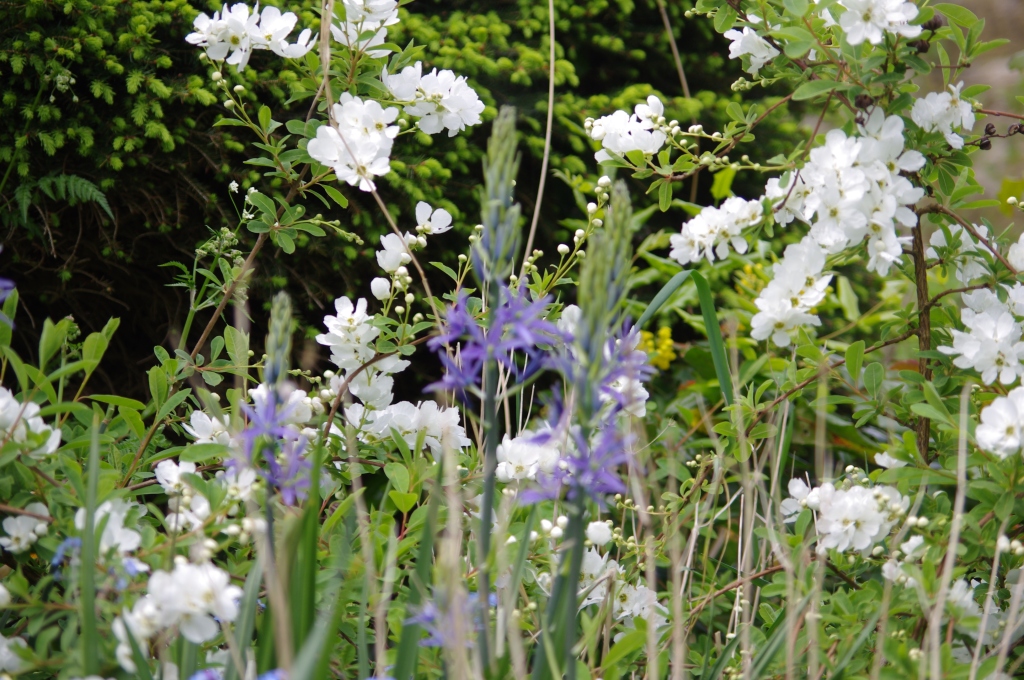


One job which I need to carry out but am reluctant to do so, is removing a pear tree which has succumbed to canker. The tree has been declining over the past couple of years despite my best efforts to prune back the disease when it appears. Unfortunately, as the leaf buds were meant to be bursting this spring, the bare branches showed that the tree was losing the battle. It now needs to be removed in order to prevent the spread of the canker to a neighbouring pear but I have not yet been able to bring myself to take out the saw and cut a tree I have raised from a young whip.
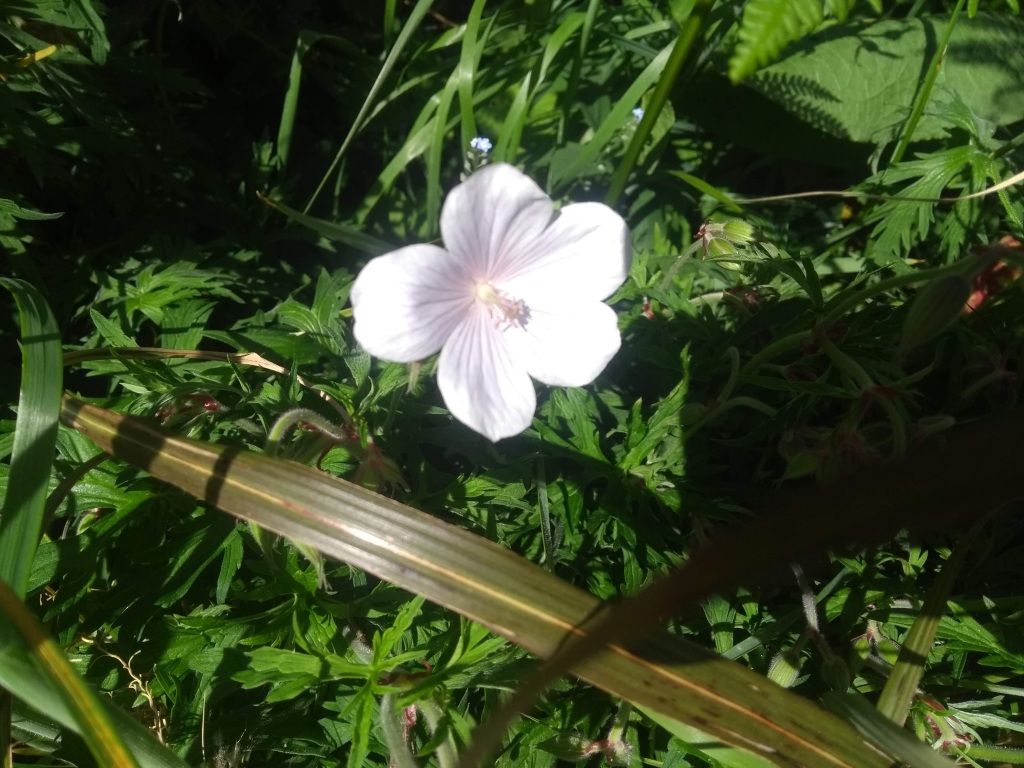
As we reach the peak of flowering in the garden with geraniums, iris and roses , the fleeting nature of the seasons reinforces the idea that we should embrace the moment. By taking a break we can instil a greater appreciation of the world around us, and by improving our environment we can also improve our own wellbeing. When this is all over, and the busy pace of life returns, we should all take time to stand and stare.
How cool to find artifacts. There are not as many here because the people who lived here centuries ago did not leave much to find.
LikeLike
Looking stunning as always – the cherry shot would make a good print in the house 🏠 👍
LikeLike